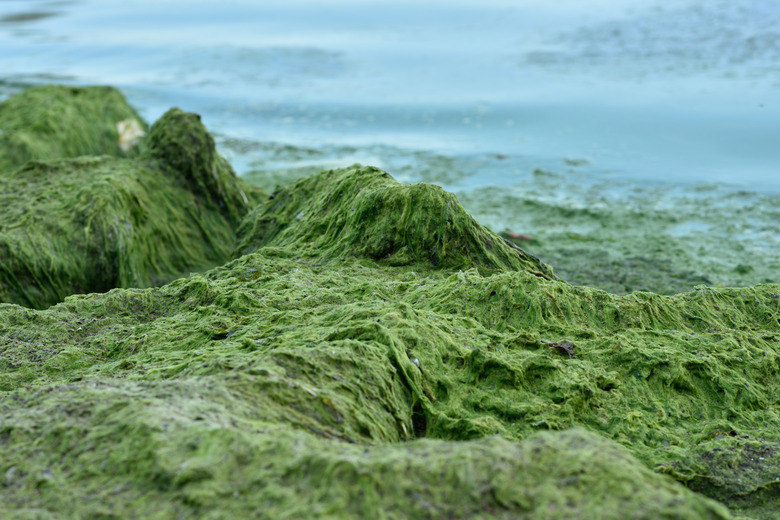What Are The Benefits Of Protists?
Protists are single-celled lifeforms that display both plant or animal characteristics. They are organisms that straddle the line between plant and animal. Some protists do veer more towards plant than animal and vice-versa. For example, seaweed is considered a protist and it's very plant-like, while the bacteria living in an animal's gut are more animal-like. Protists do offer some major benefits to other lifeforms on Earth.
TL;DR (Too Long; Didn't Read)
Protists are a good food source and have symbiotic relationships with other organisms. Some protists also produce oxygen, and may be used to produce biofuel.
Food Source
Food Source
Protists are a food source for many animals. Phytoplankton is one of the sole food sources for whales, some of the largest creatures on Earth. Zooplankton are fed on by various sea creatures including shrimp and larval crabs. Humans even harvest various protists for food. Seaweed is an algae, which is considered a plant-like protist. Many also eat spirulina and aphanizomenon flos-aquae in supplements for omega-3 fatty acids and other purported nutrients. Protists serve as the foundation of the food chain.
Benefits For Their Ecosystem
Benefits For Their Ecosystem
Protists, such as aphanizomenon flos-aquae and spirulina, are types of blue-green algae that also produce oxygen as a by-product of their respiration cycle. If not for these little cyanobacteria, Earth would not be the oxygen rich planet it is today. Blue-green algae provides 80% of the Earth's oxygen. Algae, such as seaweed, also serve as mini-ecosystems for other marine life, especially the juvenile and larval forms that need to hide for safety.
Economic Benefits
Economic Benefits
Blue-green and brown algae is currently being grown for biofuel, which could eventually replace traditional fossil fuels. Living algae is 50 percent oil, and can be harvested and processed into usable oil, diesel and gas fuel. Plus, the algae grows very fast, allowing producers to keep up with an ever increasing demand. Modern fossil fuels also originated from the remains of prehistoric animals and brown algae.
Symbiotic Relationships
Symbiotic Relationships
Other types of protists offer more direct benefits for animals in the form of symbiotic relationships. Trichonymphs live in the intestines of termites, feeding on the wood cellulose that termites eat and breaking it down into digestible components. These protists live in the digestive tracts of several cellulose eating organisms. Various protists and bacteria also live in the digestive tracts of ruminants, such as cows, and help them break down the food they eat for nutrients and energy.
Cite This Article
MLA
Chandler, Faith. "What Are The Benefits Of Protists?" sciencing.com, https://www.sciencing.com/benefits-protists-8610834/. 25 April 2018.
APA
Chandler, Faith. (2018, April 25). What Are The Benefits Of Protists?. sciencing.com. Retrieved from https://www.sciencing.com/benefits-protists-8610834/
Chicago
Chandler, Faith. What Are The Benefits Of Protists? last modified March 24, 2022. https://www.sciencing.com/benefits-protists-8610834/
